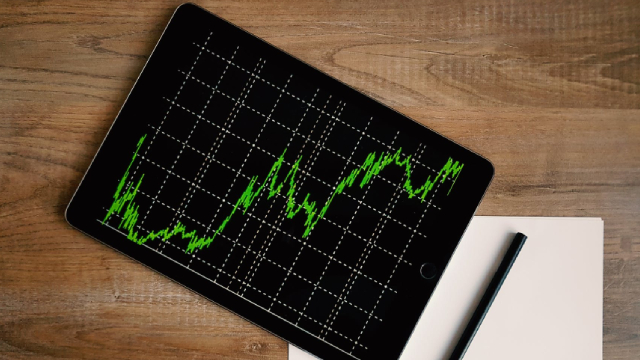Warren Buffett, the CEO of Berkshire Hathaway, oversees a $298 billion portfolio of publicly traded stocks and securities, besides numerous wholly owned subsidiaries. Berkshire is also sitting on $325 billion in cash, which Buffett and his team can invest in new opportunities when they arise.
Berkshire stock has delivered a compound annual return of 19.8% since Buffett became CEO in 1965, crushing the average annual gain of 10.4% for the S&P 500 index over the same period.
It highlights Buffett’s ability as a stock picker, but as a full-time professional, he knows the average retail investors would struggle to replicate his success. That’s why he often recommends they buy exchange-traded funds (ETFs) instead, and Berkshire holds small positions in two of them: the Vanguard S&P 500 ETF (VOO 1.06%) and the SPDR S&P 500 ETF Trust.
Both funds track the performance of the S&P 500, but the Vanguard ETF might be the better choice because of its extremely low cost. According to an estimate from a top Wall Street analyst, investors who buy the ETF today could see a return of 147% by 2030.

Warren Buffett. Image source: The Motley Fool.
A great index fund for investors of all experience levels
The S&P 500 is made up of 500 of the highest-quality companies listed on American stock exchanges. They represent 11 different sectors of the economy, which makes the S&P the most diversified of the major U.S. indexes.
To qualify for inclusion in the S&P, companies must have a market capitalization of at least $20.5 billion, and they must be profitable over the most recent 12-month period. Even then, it’s up to a special committee to decide which stocks make the cut. The Vanguard ETF aims to hold the same stocks while maintaining similar weightings, which is how it tracks the performance of the index.
Despite the diversification, the information technology sector alone represents over 32% of the entire value of the S&P 500. That’s because the index is weighted by market capitalization, and each of its three largest holdings — which have a combined value of $9.7 trillion — are from the tech sector:
|
Stock |
Vanguard S&P 500 ETF Portfolio Weighting |
|---|---|
|
1. Apple |
7.59% |
|
2. Nvidia |
6.60% |
|
3. Microsoft |
6.28% |
Data source: Vanguard. Portfolio weightings are accurate as of Dec. 31, 2024 and are subject to change.
Those three companies are betting heavily on artificial intelligence (AI), as are Amazon, Meta Platforms, Tesla, and Alphabet, which are also top-10 holdings in the Vanguard ETF. AI could be one of the biggest financial opportunities in the history of the tech sector, with the consultancy PwC estimating it could add $15.7 trillion to the global economy by 2030.
But the S&P 500 isn’t all about technology. Berkshire Hathaway itself is the tenth-largest holding in the Vanguard ETF, and sitting just outside its top 10 positions, investors will find JPMorgan Chase, Visa, Costco Wholesale, Walmart, Coca-Cola, McDonald’s, and more.
As I touched on earlier, the Vanguard S&P 500 ETF is one of the lowest-cost funds in the world. It has an expense ratio of just 0.03%, which is the proportion of an investment deducted each year to cover management costs. In other words, the annual fee on a $10,000 investment is just $3.
The SPDR S&P 500 ETF Trust, which Berkshire also holds, is three times as costly, with an expense ratio of 0.09%.
Potential upside of 147% by 2030
Tom Lee of Fundstrat Global Advisors predicts the S&P 500 could reach 15,000 by 2030, representing a potential upside of 147% from where it trades as of this writing. That’s the return investors can expect from the Vanguard ETF if he’s right.
Lee thinks a major demographic tailwind will contribute to the gains, because millennials and Gen Zers are entering their prime working years (between the ages of 30 and 50), which is when they earn the most money and make big life decisions like investing.
He also thinks trillions of dollars will be funneled into AI and automation in the coming years to offset shortages in the workforce all over the world. That could drive a productivity boom, and some of that money will probably flow into big tech companies like Nvidia and Microsoft, which provide the tools businesses need to deploy AI. The resulting upside in their stock prices will be a tailwind for the S&P 500.
With all of that said, investors should always take Wall Street’s forecasts with a grain of salt because analysts don’t always get things right. However, Lee has been remarkably accurate over the last few years.
He predicted the S&P 500 would reach 4,750 in 2023 when many other analysts were cautious, and it closed the year at 4,769. The S&P also exceeded four of his price targets throughout 2024 (5,200, 5,500, 5,700, and 6,000). But he is human, because he issued one final target of 6,300 in December, which didn’t play out.
The journey to 15,000 for the S&P 500 is likely to be bumpy. Recessions, politics, pandemics, or even the failure of AI to live up to expectations could be speed bumps along the way. However, history suggests the index always rises to new highs given enough time, so the 15,000 milestone is probably in the cards over the long term even if it doesn’t happen by 2030.
As a result, investors should definitely consider taking Buffett’s advice by buying the Vanguard S&P 500 ETF.
Financial Market Newsflash
No financial news published today. Check back later.









